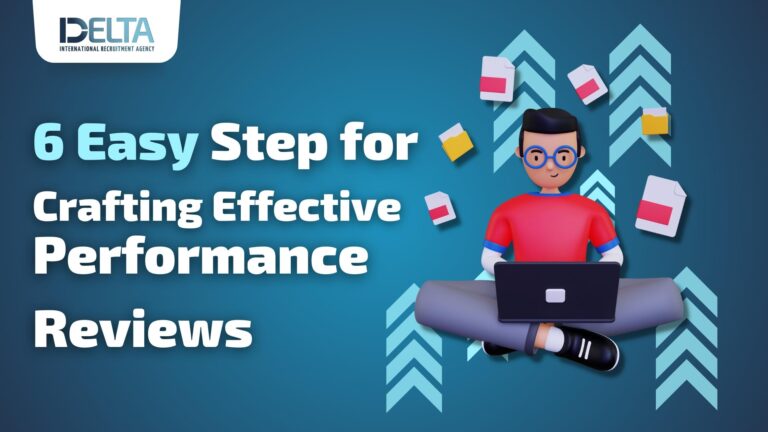We all recognize the significance of providing constructive feedback to support employees in reaching their goals and advancing their careers. However, there persists an outdated notion that relying solely on annual performance reviews is sufficient for achieving this objective.
It’s crucial to acknowledge that without regular and timely feedback, we inadvertently allow negative behaviors to persist, overlook hiring opportunities form overseas to commend outstanding performance, and run the risk of losing valuable team members.
To foster a more effective feedback culture, it is essential to structure performance reviews throughout the entire year. By doing so, we create a proactive approach that not only addresses areas for improvement but also acknowledges and celebrates successes.
Here's a straightforward breakdown of steps to integrate regular reviews into your organizational rhythm.
Setting Up a System and Following Through
Before you dive into organizing reviews and assessing how well an employee is doing, it’s important to figure out the right structure for your company and team. Keep in mind that the way you review a remote team will be quite different from how you review a team working together in the same office. You also need to decide whether annual reviews happen based on a calendar year or on an employee’s anniversary with the company. As a leader, it’s your role to establish and stick to the structure that works best for your team.
Image Source: walkme.com
Step 1: Weekly Check-Ins
Stay in the loop with your team’s weekly activities and challenges through these quick catch-up sessions. Use the insights gained to address the root causes of performance, engagement, or cultural fit issues. Weekly touch-bases foster genuine conversations, building trust between leaders and their teams. Whether one-on-one or with the whole team, keep these sessions short and focused to monitor trends and daily work effectively.
- Quick Insights:
- Gain a real-time understanding of ongoing projects and potential challenges.
Identify areas of improvement promptly to enhance overall team performance.
- Gain a real-time understanding of ongoing projects and potential challenges.
- Team Collaboration:
- Encourage open dialogue within the team for effective problem-solving.
Build camaraderie and trust through regular communication.
- Encourage open dialogue within the team for effective problem-solving.
- Trend Monitoring:
- Track patterns and trends in team activities for strategic decision-making.
Ensure that daily tasks align with broader team objectives.
- Track patterns and trends in team activities for strategic decision-making.
Step 2: Monthly Check-Ins Performance
Step up the structure with monthly reviews, honing in on goals, metrics, and observed trends. Align tasks with quarterly goals, minimizing distractions during these sessions, which are solely about you and your employee. Keep them brief, unless a specific problem or area requires attention. Conduct these reviews one-on-one, pairing them with corrective coaching to keep individuals on the right track.
- Goal Alignment:
- Focus on aligning individual tasks with broader quarterly goals.
Discuss progress in relation to established metrics and key performance indicators (KPIs).
- Focus on aligning individual tasks with broader quarterly goals.
- Distraction-Free Focus:
- Emphasize the importance of a distraction-free environment during monthly reviews.
Enhance the quality of discussions by minimizing external interruptions.
- Emphasize the importance of a distraction-free environment during monthly reviews.
- Corrective Coaching:
- Provide constructive feedback and coaching to address identified areas of improvement.
Guide employees toward effective strategies for achieving their goals.
- Provide constructive feedback and coaching to address identified areas of improvement.
Step 3: Quarterly Reviews
Quarterly reviews align with businesses breaking the year into quarters. Ensure employee goals match quarterly business goals. Employees self-assess progress, compared with manager feedback, shaping new plans and goals for the next quarter.
- Strategic Alignment:
- Align individual goals with overarching quarterly business objectives.
Ensure that employees understand their role in contributing to broader organizational success.
- Align individual goals with overarching quarterly business objectives.
- Self-Assessment Opportunities:
- Encourage employees to reflect on their progress and achievements.
Facilitate a collaborative discussion on areas for growth and development.
- Encourage employees to reflect on their progress and achievements.
- Continuous Improvement:
- Use feedback from quarterly reviews to implement continuous improvement strategies.
Identify and celebrate successes, fostering a positive and forward-looking team culture.
- Use feedback from quarterly reviews to implement continuous improvement strategies.
Step 4: 360-Reviews
Before annual reviews, gather feedback from coworkers and managers to provide a comprehensive view of an employee’s performance. Focus on personal goals and business objectives, avoiding unconscious bias.
Step 5: Annual Reviews
An annual culmination of all reviews, evaluating employees based on KPIs, goal setting, budgets, and quarterly plans. Face-to-face discussions provide a comprehensive overview, with 360 reviews if applicable.
Step 6: Separate Compensation Reviews
After annual reviews, schedule a separate meeting for salary and bonus discussions. Keep the focus on behaviors and goals during annual reviews, ensuring clarity on performance and preventing job insecurity. Do not delay compensation reviews to maintain employee satisfaction and retention.
Image Source: aihr.com
Understanding Your Team’s Needs
Finding the right rhythm for performance reviews is crucial. Striking a balance in both the frequency and depth of these reviews is key. It’s essential to create a space where employees not only receive feedback on their work but also have the chance to share their thoughts. Without this two-way communication, employees may feel unsure about their direction at work.
Discovering Talent for Your Team
Are you on the lookout for skilled professionals to join your team? Why not hire from one of the top Recruitment Agency in Pakistan for Bahrain for your future recruitment needs. If you’re aiming to fill open roles with candidates who will be valuable assets in the long run, connect with one of us today! Let’s collaborate to elevate your company to the success it deserves.
Tips for Employers: 6 Easy Step for Crafting Effective Performance Reviews




